Aldi and IGA given low ranking in supermarket healthy eating report
SHOPPERS love the German giant but a new report shows it’s ignoring Aussie customers and falling behind Coles and Woolworths.
ALDI may be one of Australia’s fastest growing supermarket chains but a new report has put the German giant firmly in the doghouse.
A study on what the major supermarkets are doing to promote healthy eating and lessen obesity rates has listed Woolworths as the best performing retailer.
But a graph in the analysis, which scores the supermarkets out of 100, isn’t happy reading for Aldi.
Out of a possible overall healthy mark of 100, Aldi scored just 11. IGA did even worse, not even managing to get into double figures.
The report by the Global Obesity Centre at Deakin University put Australia’s four largest supermarkets under the microscope looking at the nutritional value of private label products, clear nutrition labelling, and the promotion of junk food and confectionary free check-outs.

“The vast majority of Australians buy their food at supermarkets, and the way these shops are set up can heavily influence what we buy, said lead author, Associate Professor Gary Sacks.
Aldi was criticised for lacklustre efforts to remove fats and sugars from products and for failing to bring healthy eating initiatives it makes a noise about in the UK to Australia.
But the company has told news.com.au the findings “do not adequately represent the full range of policies and process (at) Aldi” and that they have written to Deakin to “express our dissatisfaction” with the research.
IGA’s derisory score was because the retailer shunned a Government endorsed healthy food scorecard and put few healthy foods on special.
Metcash, which supplies the independently owned IGA stores, said the analysis was “unfair and disappointing”.

Overall, Woolworths and Coles fared best, scoring 46 and 40 out of 100 respectively.
Woolworths received plaudits for offering kids free fruit to munch on in store. But Professor Sacks said Coles and Woolworths shouldn’t be too smug at beating IGA and Aldi.
“The top scoring supermarket only got 46 out of 100 which is only a passing grade and they could be doing a whole lot more,” he said.
Professor Sacks said all retailers were guilty of packing their catalogues with calorie and fat packed foods.
“It’s fine to have a bit of junk food in the catalogues, but it’s about balance and at the moment unhealthy food dominates what’s on special.”
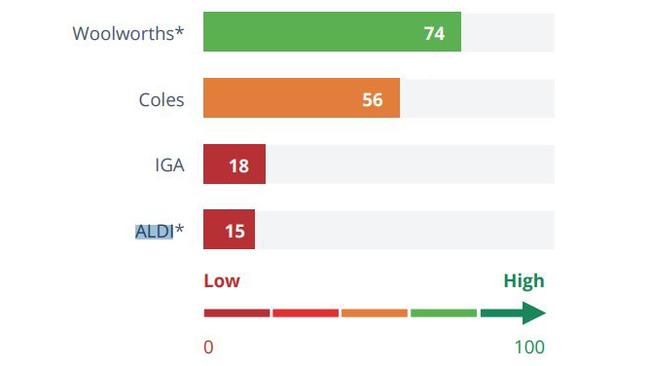
Lolly laden check-outs were also in the naughty corner: “Chocolate and sugary drinks are very much impulse buys with kids pestering parents but if we get rid of these temptations (at the checkout) we can improve the overall healthiness of the trolley.”
Coles and Woolworths were both praised for voluntarily rolling out the Government’s Health Star Rating system on their own products.
This sees food given a score from one to five, the higher number the more nutritious.
IGA has instead opted to show the recommended dietary intake (RDI) one serve of the product would give you; for instance the percentage of fat you might get in a serve of bacon.
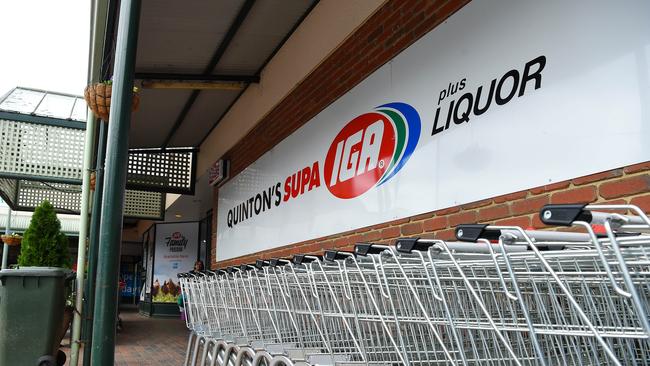
Metcash spokesman Steve Ashe said there were weaknesses in the Star Rating program.
“We believe (RDI) labelling is more beneficial for shoppers due to the increased nutritional information it provides. It is disappointing that those associated with this particular study have not rewarded our decision to adopt greater disclosure on nutrition.”
Mr Ashe said IGA was hampered because individual stores owners chose what products to stock. Nonetheless, the company was looking to increase the range of fresh and healthy food options in stores.
Professor Sacks acknowledged the Star Rating system had its “quirks”. The most glaring example is that Milo has a glowing 4.5 star rating based on the assumption people always consume it with skim milk. Yet, consumer group Choice has claimed Milo, on its own, would have a rating of just 1.5 stars.
But it was the best system currently in place, he said. “The Healthy Star Rating is Government endorsed and we commend Coles and Woolies for adopting it.
“There has been some criticisms but on the whole the system does a really good job of pointing out which products are healthy.”
Aldi told news.com.au it was the first retailer to offer RDI labelling across its entire range and had “committed to the implementation of the Health Star Rating system”. However, the report states there was no specific roll out plan.
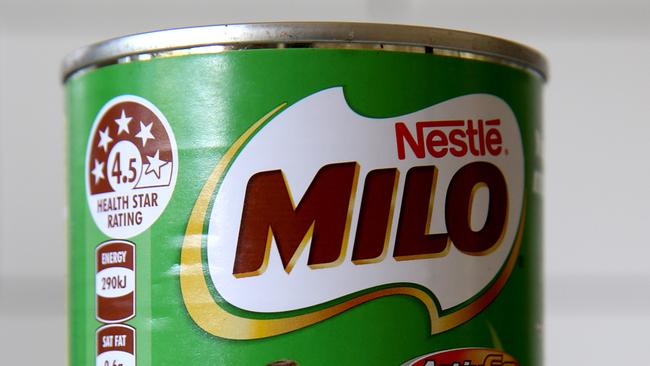
The report called out Aldi for much of the same criticisms as IGA, but also said the chain did not provide nutritional information online and that its own label products could be far healthier.
“Aldi haven’t made the commitment to improve the healthiness of their products and they need to set targets to reduce salt, fat and sugar in them,” Professor Sacks said.
The Australian arm of the chain was falling far behind Woolworths on reducing additives in its own label products and was even falling behind Aldis elsewhere in the world.
“Globally, Aldi has made far stronger commitments but Aldi in Australia hasn’t. If they would just match some of their UK policies in Australia that would make a difference.”
An Aldi spokesman said they were “committed to reducing sugar, sodium and saturated fat content” as well as avoiding artificial colours and MSG.
The retailer said the report misunderstood its promotional strategy which was based on “every day affordability” and not specials on unhealthy products.
“The findings do not adequately represent the full range of policies and processes Aldi Australia has in place to ensure our customers can make healthy choices. We have written to Deakin University to express our dissatisfaction with their process and to dispute alleged claims,” a spokesman said.
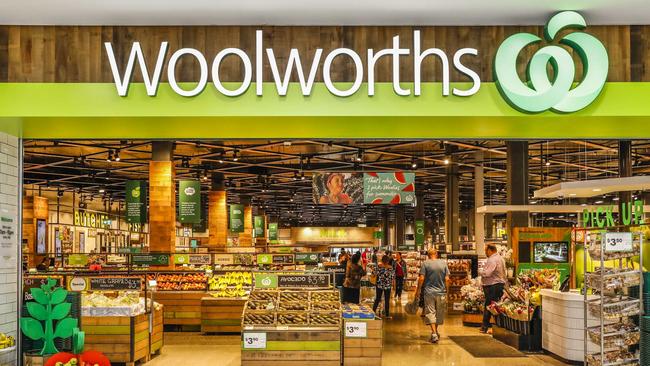
Woolworths said it was increasing space in its new and refurbished stores for fruit and vegetables and in the last five years had removed 395 tonnes of salt, 118 tonnes of saturated fat and 300 tonnes of sugar from own label products.
“We are pleased to see key initiatives, like our support for the Health Star Ratings and our Free Fruit for Kids program, which has given out over 18 million pieces of fruit in the last year alone, being recognised,” said Claire Peters, the Managing Director of Woolworths Supermarkets.
Ms Peters said it was “only the start of the journey” but the firm couldn’t give a timeline for new initiatives such as fully snack-free registers.
A spokesman for second placed Coles said more than 1550 products carry the Star Ratings but called out the report for not taking into account the role of exercise in a healthy lifestyle. As such, its program to give sports equipment to schools, a similar scheme of which operates in Woolworths, was not judged.
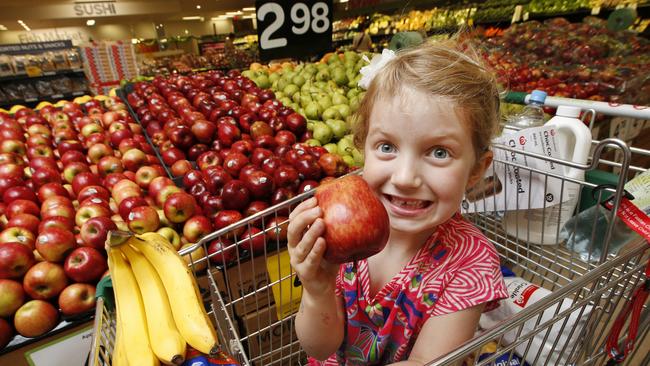
“As a member of the Food and Health Dialogue round table, Coles worked with food industry stakeholders to reduce the levels of salt in foods such as breads, cereals and cheese, and as part of the Healthy Food Partnership we are working with food manufacturers to formulate new, lower nutrition targets for sugar and saturated fat,” he said,
Professor Sacks said the report was a wakeup call for some supermarkets to pull their socks up. “This is an opportunity for IGA and Aldi to make it clear they are a healthy places to shop.”




